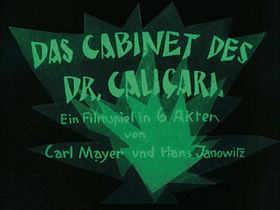
(Before Michael left the stage,
he sent me this about the section part of the parallel reading)
There is no doubt, this is an oldfashioned way of telling a story – and that’s what I love about it. I don’t always need a narrator who switches his (past-presence-)perspectives in totally sophisticated ways. In contrast to Ian’s reservations, i would never call the narrator’s perspective „outdated“, though he makes good points in hinting at this. Yes, the young Frank Drum enters the pasttime hell (with its deceptively heavenly moments) as someone who is fully there, in 1961, seeing, feeling, hearing everything what is within the scope of his senses and thoughts. And this works (though following the most traditional ways of storytelling) as a great trance induction of sorts.
Simple as Kent Krueger’s approach may be, he’s a damn good writer in creating atmospheres, and balancing emotional states of mind and the course of the action. Julian Barnes bores me to death (i never finished one of three books I started reading), on the other hand I love David Mitchell. Sometimes experimentalism works for me, sometimes not at all. Now the Indian guy comes into focus: is he collecting objects from the dead ones? Why? For some shamanistic rituals? Are there darker motives?
Suspects all over the place, but I’m not in The Holmes-Watson-mode yet. Has Lise been raped? What is the role of the rich family (dead bodies in the cellar?), then the shy suggestions of the son concerning his plans of marriage. The police officer with some sadistic potential. This all is all delivered without big exclamation marks. A town wrapped in secrets (ha, that’s what could be read about the British class crime drama „Broadchurch“, season two is arriving in March, don’t miss it). Nevertheless, i still love this anti-ageing aspect of the novel. I remember my own naivety concerning the world of the grown-ups and the shocks when glass was broken, and words crossed the rooms like sharp scissors. But we were survivors, weren’t we?
I’m seventeen again.
For me it is simply rewarding to move through a scenery of old America. I might have been fallen in love with the music of Aaron Copland, and Emil Brandt. Although, I would have been allergic against too much patriotism. Remember, it all takes place in the „United States of Amnesia“: the white man killed the Indians, and William Redstone knows history. Hope he didn’t fall from grace. I have no reason to believe the shining star of the town is still alive. I think she was killed. The shadow world takes over.
Michael Engelbrecht

–
Manchmal kommen einem im richtigen Leben plötzlich Menschen abhanden. Sie gehen dann woanders hin oder machen was anderes – warum auch nicht. Nur wenn Sie einem wichtig waren, ist es nicht lustig. Im Kriminalroman kommen grundsätzlich Menschen abhanden. Damit man da nicht den Überblick verliert, pflegte der Rowohlt Verlag in seiner schwarzen Thrillerreihe auf Seite 5 stets „Die Hauptpersonen“ vorzustellen. Wenn man diese Seite aufmerksam las, brauchte man eigentlich das Buch schon nicht mehr zu lesen. Ich will eine solche Hauptpersonen-Seite für Ordinary Grace schreiben. Also lieber nicht lesen.
Die Hauptpersonen
Frank
ist 40 Jahre alt, als er von jenem Sommer erzählt, der den damals Dreizehnjährigen 4x mit dem Tod konfrontierte.
Jake
passt auf, dass Frank nicht zu viel „Hölle“ oder „zum Teufel!“ sagt. So sind sie, die kleinen Brüder. Frank sagt es dann erst recht – und so sind sie, die großen Brüder.
Nathan
gibt sich redlich Mühe, als guter Pfarrer viel Gutes zu tun und darob nicht schlechte Laune zu bekommen.
Ruth
hatte andere Träume und Pläne, als ihr Ehemann sich nach dem Jurastudium plötzlich entschloss, Pfarrer auf dem Land zu werden.
Ariel
ist hübsch, begabt, erfolgreich, freundlich. Trotzdem – oder gerade deshalb – muss man sich um Franks ältere Schwester Sorgen machen.
Gus
war mit Nathan zusammen im Krieg; sie teilen ein düsteres Geheimnis – lange nicht mit uns.
Bobby Cole
war zwar etwas seltsam – aber eine herandonnernde dieselgetriebene Union Pacific Lokomotive hätte er einfach hören müssen.
Ein Indianer wird zum Hauptverdächtigen – er ist, wie gesagt, Indianer.
Vielleicht gibt es irgendwann noch eine Seite „Die Nebenpersonen“ – wenn das Parallellesen nicht abhanden kommt.
Wolfram Gekeler
–

„And there are drums beyond the mountain Indian drums that you can’t hear.“ (Johnny Cash: Ballads of the American Indian)
Initially a strange figure appears, Lise, the disturbed sister of Emil. Definitely she is the third star on Brandt’s planet. No one besides Jake is allowed to get close to her. If it happens anyway, Lise freaks out. In one scene she almost hit Frank to death with an iron bar. Frank finds a tin can on the riverside. Inside there is a Playboy magazine. He shows it to Jake. The boys in puberty find the photos very attractive. Then Redstone the Sioux shows up and tells the boys stories about the battles between the Indians and the Whites.
I remember my early interest for Indians in Karl May books and films. I loved Nscho-tschi, the sister of Winnetou. When she died, I was crying, probably over a “Bravo-Magazine” with Marie Versini on its cover. I was in my puberty too. Later, when I had to work in Dresden, my first visit led me into the Karl May Museum. It was exciting. Recently I read, that the curator of the museum was asked to take off the scalpels. Visitors were disturbed by the bad taste. The first real Indian I met in a bar in Seattle. He was very drunk and all my fantasies of the brave and the strong race were damaged.
I must admit, that I really liked the swimming scene, which is backed by one of my favorite songs: Roy Orbison´s „Running Scared“ and Del Shannon´s „Runaway“. Let´s return to the lake scene. Frank flexes his muscles in front of the blond girlfriend of coward Engdahl. He stares at her. „She sat up and her breasts in her red suit stuck out big as traffic cones.“ Some other little „jokes“ are told. I laughed out loud when Frank describes to Jake his first kiss: „She looked like Groucho Marx.“
After a party on the river Ariel doesn’t return home. All worry about Ariel. Karl, Engdahl and of course the Indian Redstone are questioned about her disappearance.
„An Indian brave rolled along one day
On a lonely mountain trail …
A vision formed like a mortal storm in the dust of the wagon trail …“
I immerse myself now into this music: „The Vanishing Race“ by Johnny Cash, actually better sung by Johnny Horton.
I guess the worst is yet to come.
Lajla Nizinski
–
„Morrie, baby, let him go.“
Still a very pleasant and tranquil read. No murder or death in this week’s reading task but Frank’s elder sister Ariel, the angel with a harelip, is missing. Still can’t help thinking about Tom Sawyer and Huckleberry Finn and about petty gang wars and adorable girls in my own childhood. Must be the strong male perspective of the book. Didn’t we all have had our share of elder bullies with attractive girl friends?
Thomas Schirmer
–
Ordinary Grace, chapters 11-19
The perp can’t be Warren. (Or Magwitch, as I call him, for his similarity in many ways to the Dickens character.)
Why not? Well, for reasons of context and structure. This isn’t Blood Meridian. Also, there’s a surprising lack of cowboys’n’injuns in the lives of these kids. America in the early 60s, no yee-haw thigh-slappin‘ genocide movies? I digress.
The plot plods forward, I am wading through spackle-thick filler to get to the plot advances. The characters don’t work for me, in the main. They seem kind of forced into life. Emil Brandt is the closest we’re gonna get here, I think, to solid characterisation. On the other hand, Morris Engdahl looks like he just stepped off the set of Grease. But as chapter 19 demonstrates, he ain’t singin‘. Ha!
American short stories like Rescuing Moon by Pinckney Benedict and Cathedral by Raymond Carver have characters that, for whatever reason, provide examples of how writing is a mystical, magical craft. I pick these two examples entirely at random – I’ve not read either story in over 15 years. But they worked their magic on me, and their characters live on, floating somewhere in the cerebral cortex, occasionally reappearing to say hi, remember me?
The American classic of the nuclear family is, for me, EL Doctorow’s Ragtime. Doctorow doesn’t even bother to name most of his characters: they are called things like Mother, Father, Mother’s Younger Brother, The Little Boy. OG reminds me of Ragtime for no other reason than that it isn’t Ragtime. I’m not quite sure what is being addressed in OG, or why.
Ian McCartney









